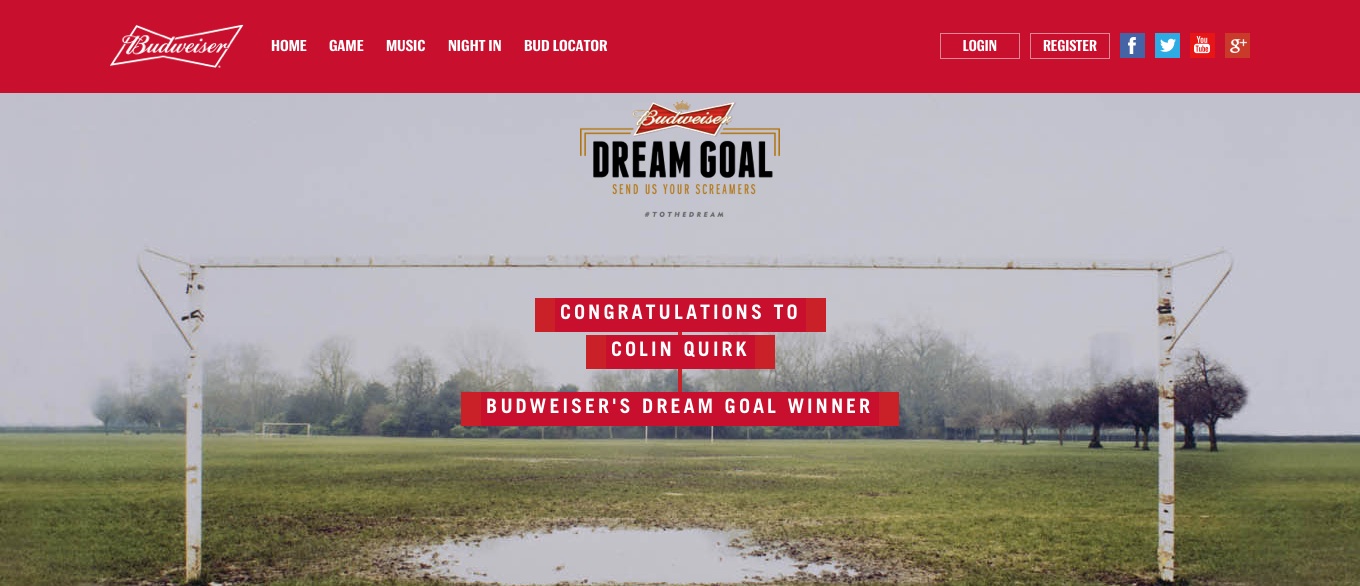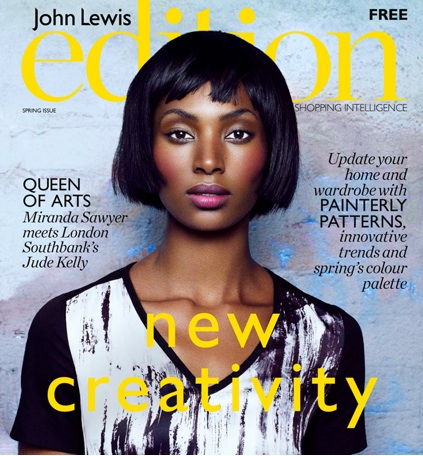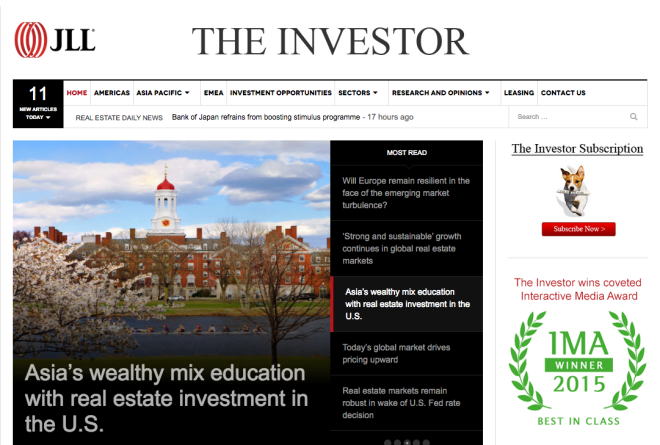Brands
How 3 UK Brands Reached Their Audiences With Great Content
While the internet has made it possible for brands to reach consumers just about anywhere there’s a Wi-Fi connection, much of the advertising industry still seems to take a U.S.-centric approach to marketing coverage. With New York City trying to hold on to its reputation as the media capital of the world, and Silicon Valley dominating headlines, it’s easy to overlook the content contributions from the rest of the world.
But it’s time for that to change.
According to the Content Marketing Institute, 87 percent of marketing professionals in the UK now use content marketing, and 53 percent planned to increase their spending in the next year. As these companies continue to experiment with social media, online video, custom magazines, and mobile, they’re finding innovative ways to strike that delicate balance between relaying a brand message and creating content that will resonate with customers.
Here are three UK brands that aren’t just keeping up—they’re getting out ahead.
JLL
Real Views may be classified as a blog, but to Jones Lang LaSalle (JLL), the London-based commercial real estate company that produces it, the site has become so much more. “We see it as more of a brand journalism site,” said Madeleine Little, JLL’s director of global marketing.
Real Views is penned by professional journalists rather than company employees, and it boasts as much multimedia content as it does text. Because of this approach, JLL has been able to branch out from typical press releases and research reports to establish credibility.
The site launched in May of 2015, and unlike the company’s other blogs, which tend to focus solely on real estate, it addresses a broader range of topics like avant-garde design and the future of charging stations for electric cars. The content is organized into four sections: Trends, Places, Economy, and Industry. In a broader context, the work boosts awareness of JLL and shows of its creative side.
“One of our main motivators was to reach an audience beyond the traditional real estate sector,” Little said, “and to demonstrate how vital and important real estate is to the world at large—to firms from a business perspective, but also [to] individuals, whether in their workplace, home, or even in their leisure activities.”
To produce a steady stream of quality content, from blog posts to graphics and videos, JLL employs a global editor in London along with in-house writers, all of whom have worked as journalists. It also partners with content agencies and a network of freelancers, and even taps its marketing and PR teams for the occasional article.
“All content is subject to the same editorial process,” Little noted. “We have very clear guidelines about the kind of topics Real Views discusses and the tone of voice that it uses.”
Stories for the site are inspired by internal and external industry events, along with breaking news. “Keeping content fresh is vital and something we work hard at,” Little said. So is weighing JLL’s marketing agenda against audience demand. “Not surprisingly, stories about luxury hotels are more popular than stories about industrial warehouses. We have to try to maintain a balance.”
When it comes to big-picture marketing strategy, JLL strives to produce informative content across all platforms, from its corporate sites all the way to its pitches and proposals. Among the company’s other projects are The Investor, a five-year-old publication for real estate investors, and microsites for specific service sectors like retail and hotels.
Also on the company’s radar is how consumers interact with its publications. JLL tailors its content to meet the needs of busy, bombarded customers. Little and her team pay particular attention to mobile responsiveness, content length, and the visual appeal of all pieces produced. She favors graphics and video—like the below clip exploring the future of China’s hospitality industry—but demands high-quality multimedia to ensure that customers aren’t “turned off” by the result.
“It’s a strategy that is constantly evolving,” Little said. “And as it does, I think we are seeing more understanding and engagement within our marketing and communications teams globally, from the business, and also from our audiences. This is really encouraging and makes this a very exciting space to work in. There’s always more to do—we can’t ever stand still.”
Budweiser UK
In the UK, one could argue that branded content and football makes for the ultimate advertising pairing. Budweiser certainly would.
“We’re huge football fans—after all, what’s better than a cold Budweiser and watching a great match?” said Nick Robinson, marketing director for Anheuser-Busch InBev UK.
It’s little wonder that the brand is behind major marketing programs like “Rise as One.” The multi-platform campaign and six-part documentary series launched in 2014 to promote Budweiser’s status as the official beer of the FIFA World Cup. The effort helped the brand become the top beer advertiser in the UK during the World Cup, with 1.8 million unique digital engaged users, a 70 percent reach on Facebook, and a 249 percent increase in Budweiser’s Twitter following.
https://youtube.com/watch?v=mh1xt1BxFdU%3Fenablejsapi%3D1
A year later, Budweiser revived the winning combination of brand videos and football with “Dream Goal,” an interactive campaign that invited amateur footballers to share their best goals with the brand online. Budweiser sorted through the user-generated clips for the most impressive goal, which was then analyzed by sportscasters through a partnership with Sky Sports. The contest’s winner, Colin “Quirky” Quirk, was featured in a national Budweiser spot on television when the contest concluded in May.
“Branded content is another connection point with beer lovers in an integrated world, and it helps us bring our brands to life in a creative and engaging way that enhances the experience beyond traditional advertising media,” Robinson said. “The user-generated content—with some amazing videos and insights—sat alongside Budweiser-generated content, and we found that both had very strong engagement levels.” He also noted that the brand was thrilled to see how many football fans were willing to share their goals and comment on those submitted by others.

Budweiser received over 1,000 entries in all, but it was the passion demonstrated by participants that led Robinson to consider the campaign a win. “What was most telling for me was when we showed Quirky’s winning goal at the FA Cup Final,” he said. “When his goal went up on the screen, the room went silent with attention and then burst into cheers for him at the end. For us, that natural response is proof that the campaign insight resonates positively with consumers—and that’s a great success in my book.”
John Lewis
John Lewis, which started as a London department store in 1864, may be best known in the U.S. for its 2014 #MontyThePenguin ad, but the retailer has long been investing in brand content in the form of print magazines. Between John Lewis Home, John Lewis Cook, and quarterly fashion title Edition—which boasts a print circulation of close to 500,000 and an editorial director who was formerly with Marie Claire—the retailers’s influence stretches far and wide.
In 2012, Edition surpassed category leader Glamour to become the fashion magazine with the largest circulation in the UK, and a few years later, it took the top spot in the women’s lifestyle magazine market again. Its articles include everything from profiles of top fashion makeup artists to interviews with up-and-coming design executives.

John Brown Media, the content shop behind all three magazines, retains a stable of editors and art directors to oversee them. In addition to in-house talent, the company commissions expert photographers, stylists, and writers to produce the work. CEO Andrew Hirsch estimates that 30 percent of the editorial team is internal while 70 percent consists of leading freelance journalists.
Catering to both print and digital audiences, John Lewis puts a lot of effort into determining how to allocate content marketing budgets. “You really need to understand how customers are absorbing content,” Hirsch said. “Over-fifties in the UK are much more into tablets than mobile, so if we’ve got a client targeting women [who are] twenty-five to thirty-five, we’ll put a lot more budget toward tablet or print.”
This approach, along with the publisher’s laser focus on producing quality content, appears to be working. Just a year after debuting, John Lewis Cook Edition had a 100 percent pick-up rate in-store, and sales of products featured in the magazine had risen by up to 118 percent. John Lewis Home, meanwhile, generated a 21 percent increase in interior and homeware product sales against estimates, proving that print isn’t just alive and kicking, but capable of delivering major returns as well.
This is an excerpt from “State of Content Marketing: United Kingdom.” Click here to access the full version of the e-book for free.
Image by Sean Davis / FlickrGet better at your job right now.
Read our monthly newsletter to master content marketing. It’s made for marketers, creators, and everyone in between.





